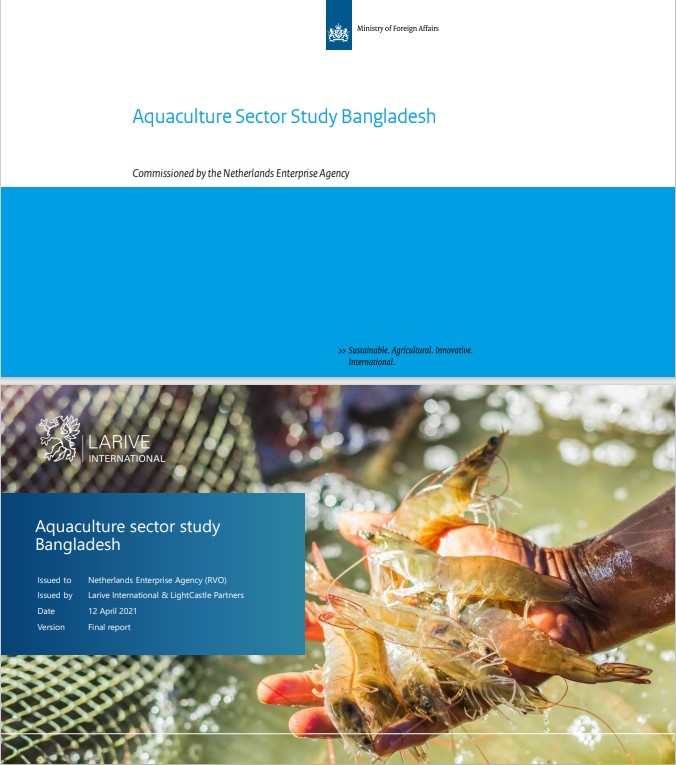🌿 COP 30 - Building a Greener Tomorrow
The 30th UN Climate Change Conference (COP 30) is taking place in Belém, Brazil. Stay informed about global climate actions, negotiations, and live sessions from 10 – 21 November 2025.
Get Updates
Aquaculture Sector Study Bangladesh
Abstract
Aquaculture production in Bangladesh is geographically dispersed, with concentrations in the Northern-Central and South-Western districts. The regions with the highest fish production are Mymensingh, Jessore, and Comilla. Bangladesh (167 MN inhabitants) has been the fastest-growing economy in Asia-Pacific in recent years (average growth rate of ~8%). Fish is the most consumed source of animal protein in Bangladesh (58% of the total) and continues to rise due to increasing consumer purchasing power. Fish consumption in 2019 has been estimated at 21.8 kg per capita and has grown gradually during the past decade (1.6% CAGR 2015-2019). In FY 2017-18, the fisheries sector contributed 3.6% to the national GDP and employed 11% of the country’s population. Bangladesh produced 4.38 MN MT of fish in FY2018-19, of which over 50% (2.49 MN MT) is cultivated in closed water bodies. Bangladesh is the world's 5th largest producer of aquaculture products, outranked by China, Indonesia, India, and Vietnam. Out of the aquaculture production, the majority (1.97 MN MT) is cultivated in ponds, mainly focusing on three species: carp (961 kMT), pangasius (447 kMT), and tilapia (321 kMT), which jointly account for 93% of freshwater fish production in ponds. As of 2019, shrimps were the most widely cultured crustacean in Bangladesh, with a production of 125 kMT. Shrimp culture is widely practiced in extensive polyculture form, resulting in a high production of fish in shrimp farms (133 kMT). With consumers’ purchasing power improving, they gravitate towards higher value cultured species such as carps and newly-domesticated species. At the same time, demand for processed fish products in the domestic market, especially in urban areas, is estimated to increase exponentially. The aquaculture sector in Bangladesh has been growing steadily in recent years (5.3% CAGR from 2009-2019); however, it offers substantial room for further professionalization from a technical and commercial perspective, enabling the industry to become more sustainable, innovative, and more competitive. Main opportunities for improvement relate to the quality of fish and shrimp genetics & breeding, disease control & animal health management, the availability of high-quality feed, post-harvest practices, cold chain development, and supply chain inter-dependencies.
Citation
ASSB 2021, Aquaculture Sector Study Bangladesh, Netherlands Enterprise Agency Prinses Beatrixlaan 2.
Publisher
Netherlands Enterprise Agency
Rights Holder
Netherlands Enterprise Agency
URI
https://knowledgehub.pksf.org.bd/collections/eGJMMjQyalV2YkUzd1ZhRDhJREpTdz09

